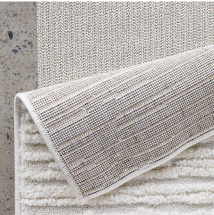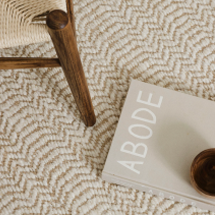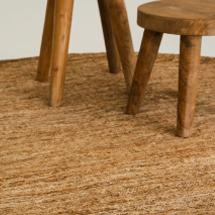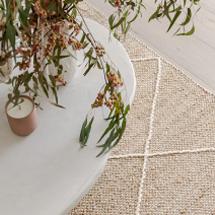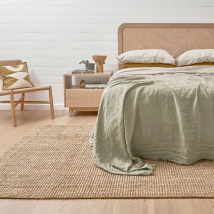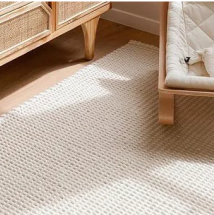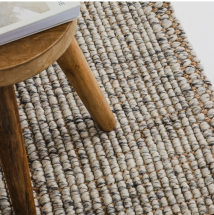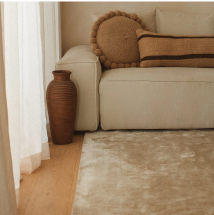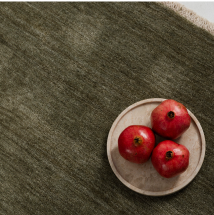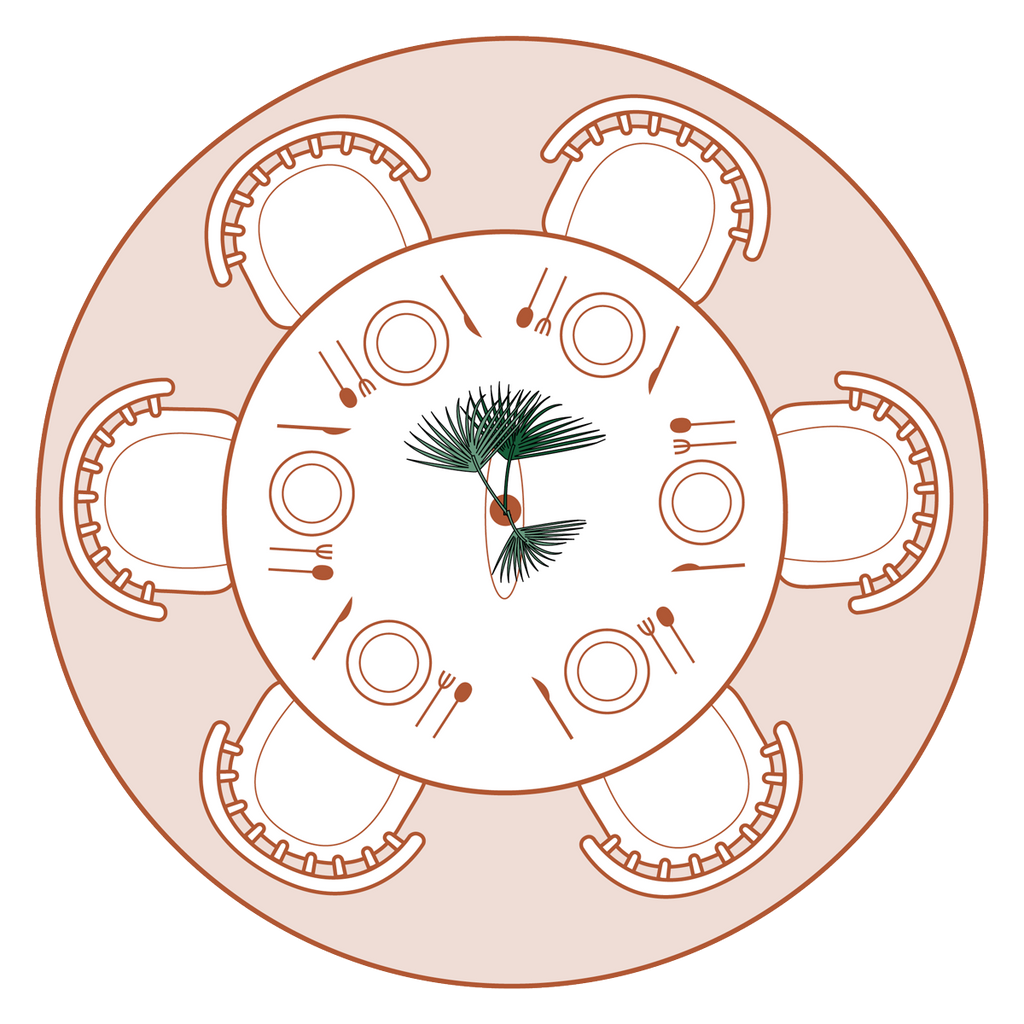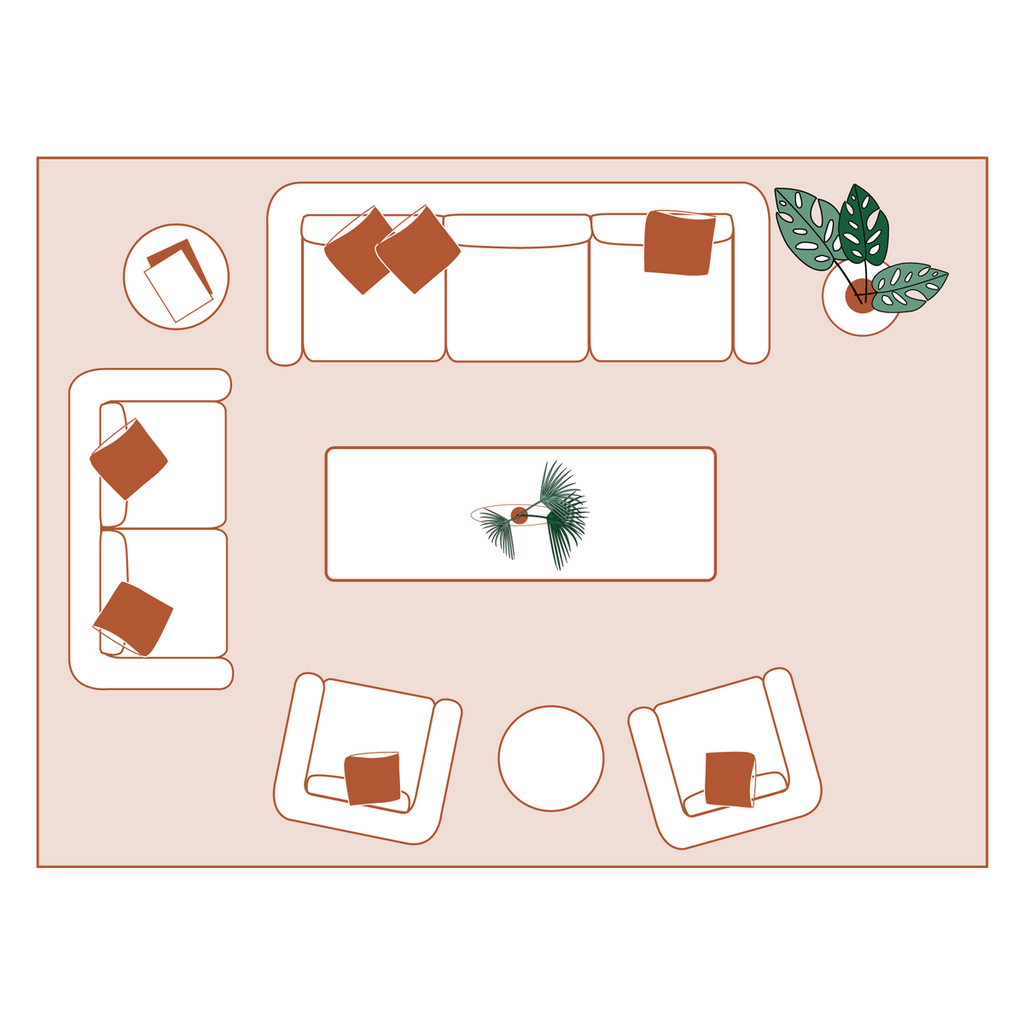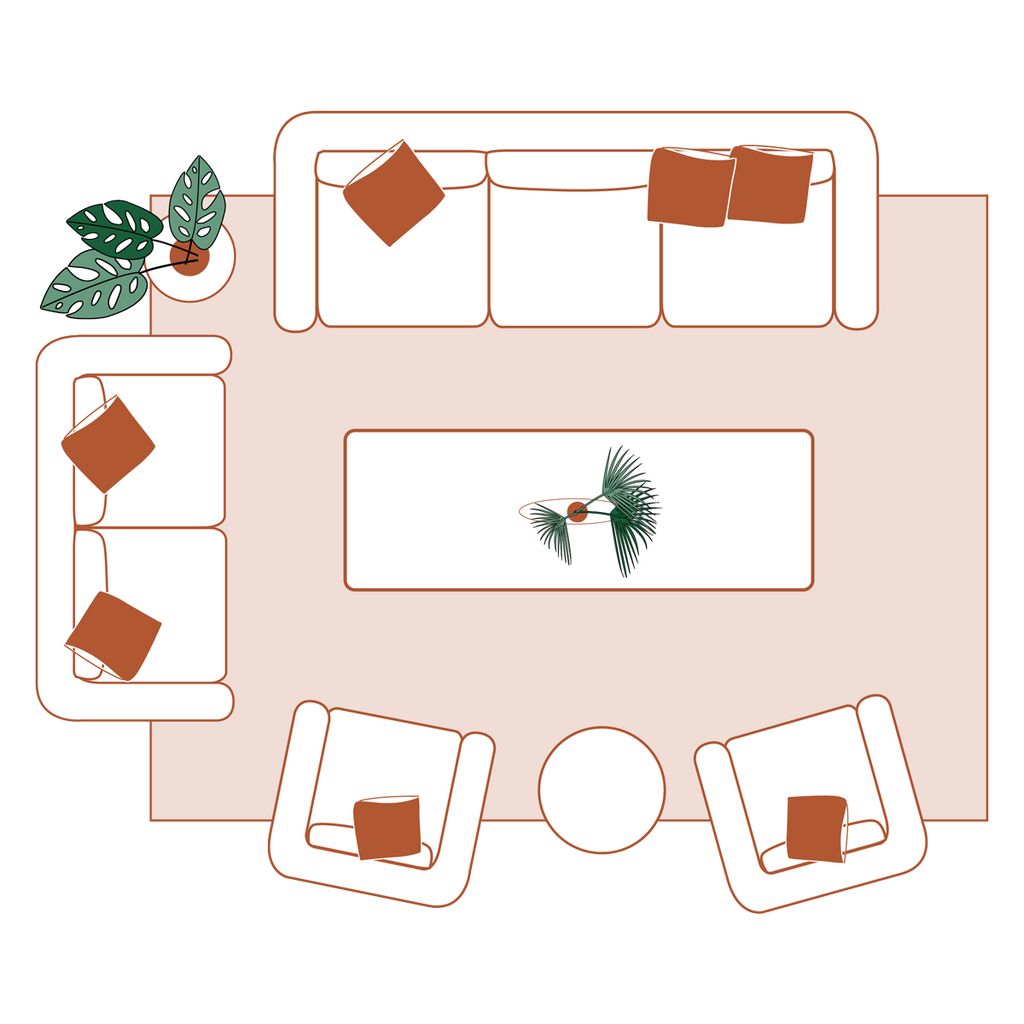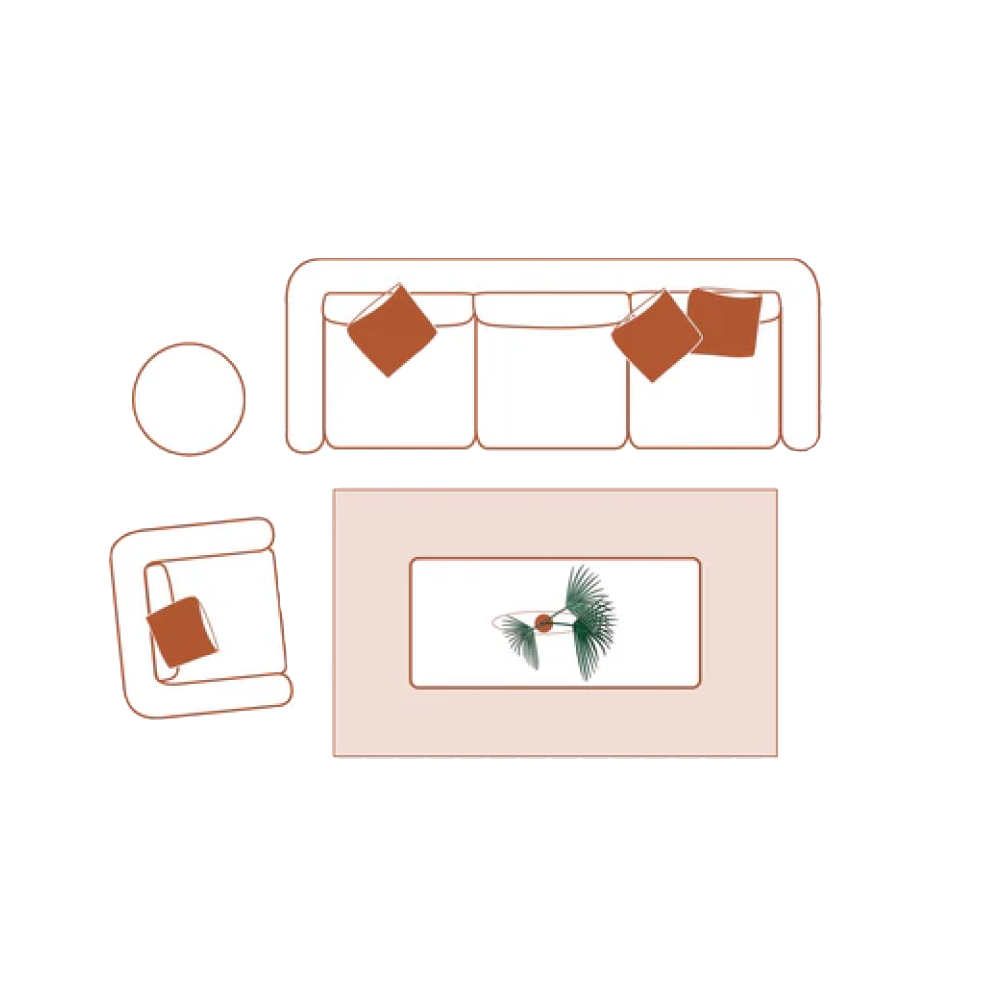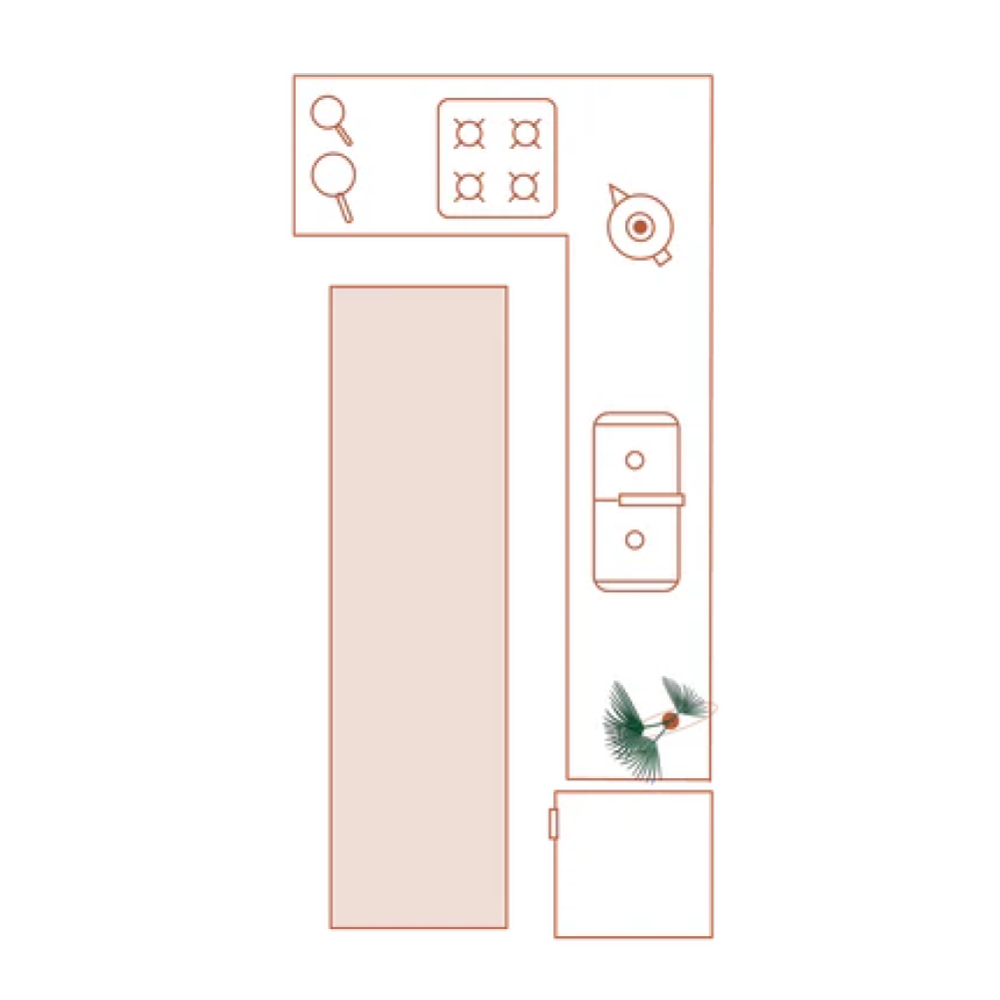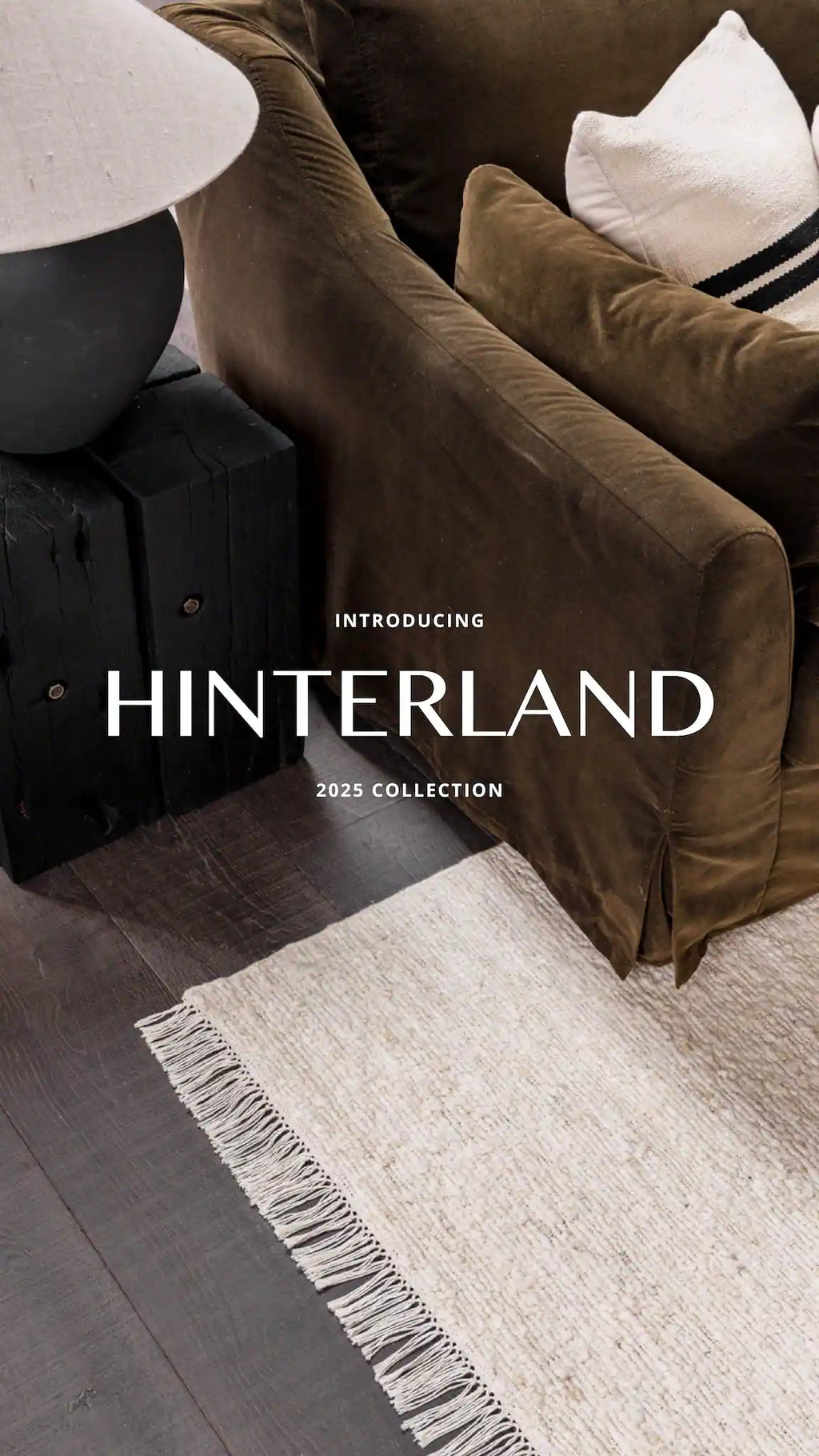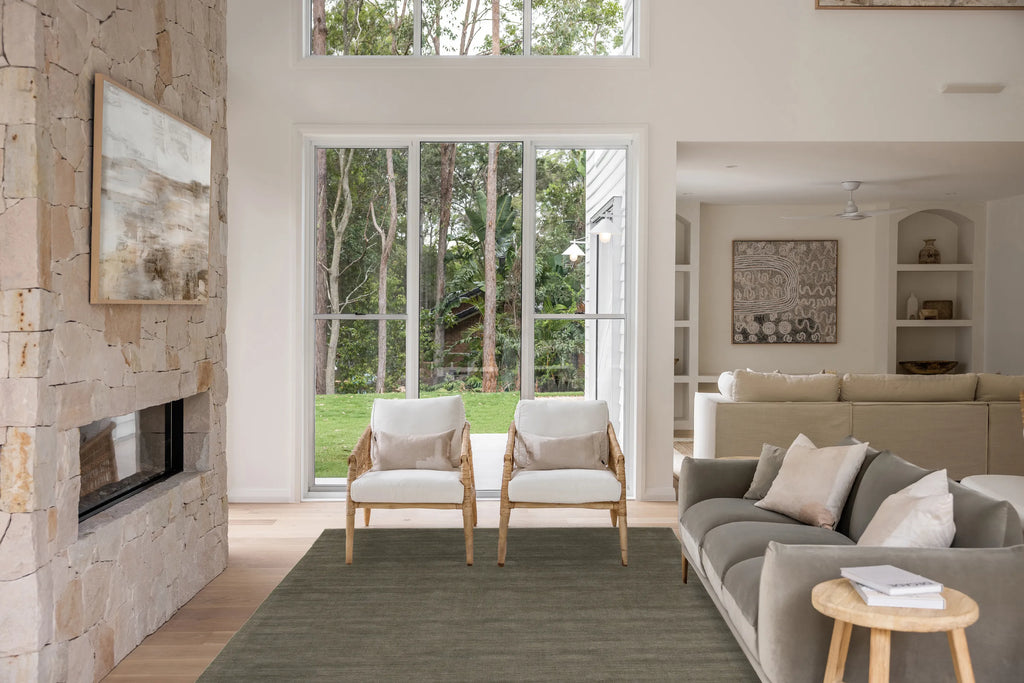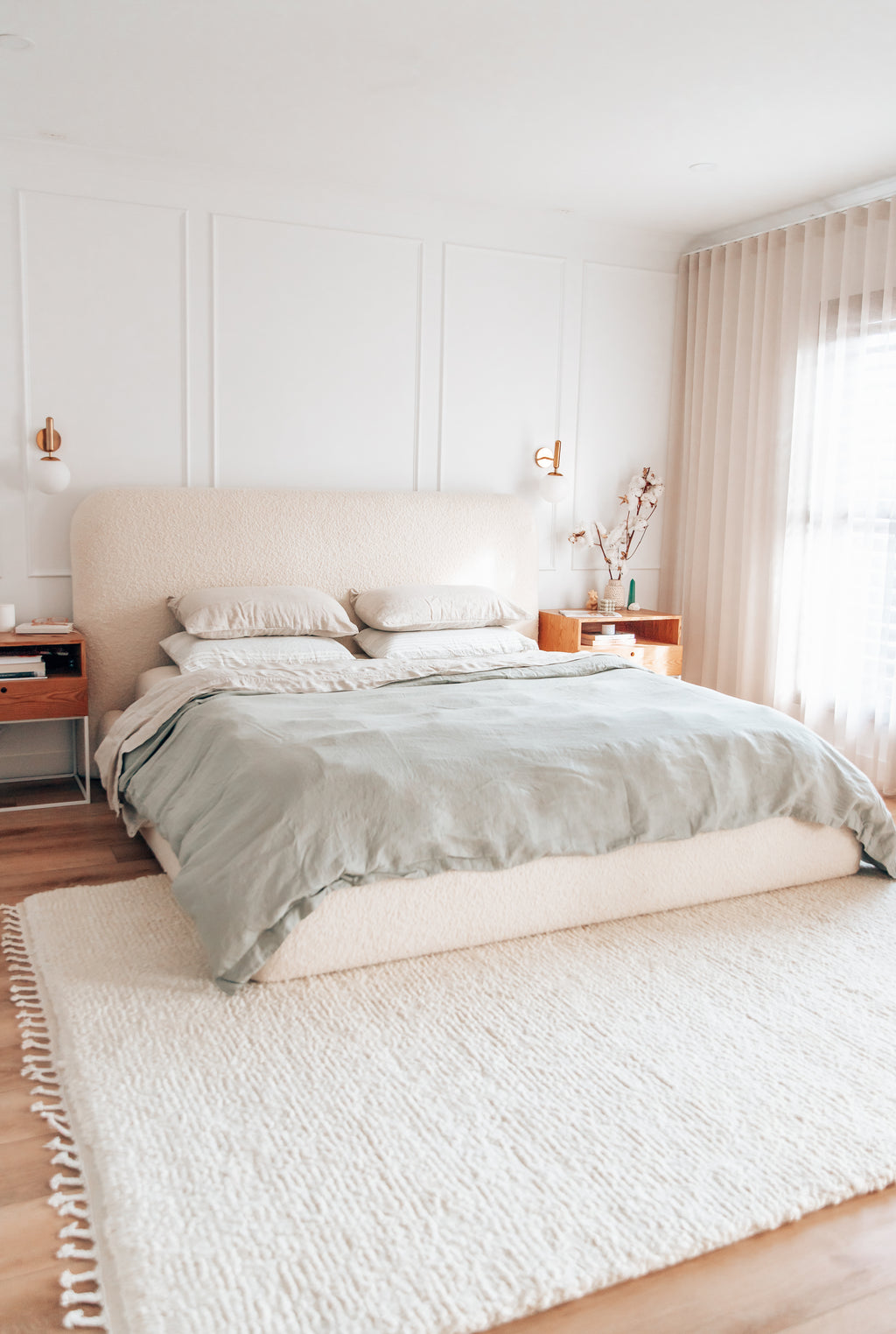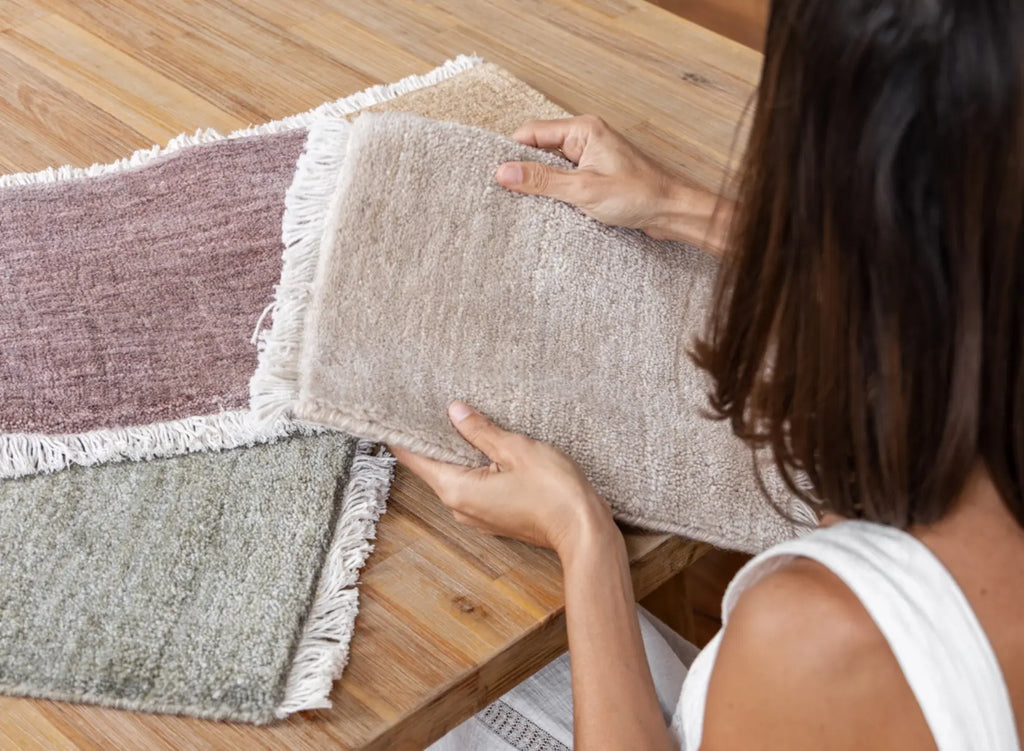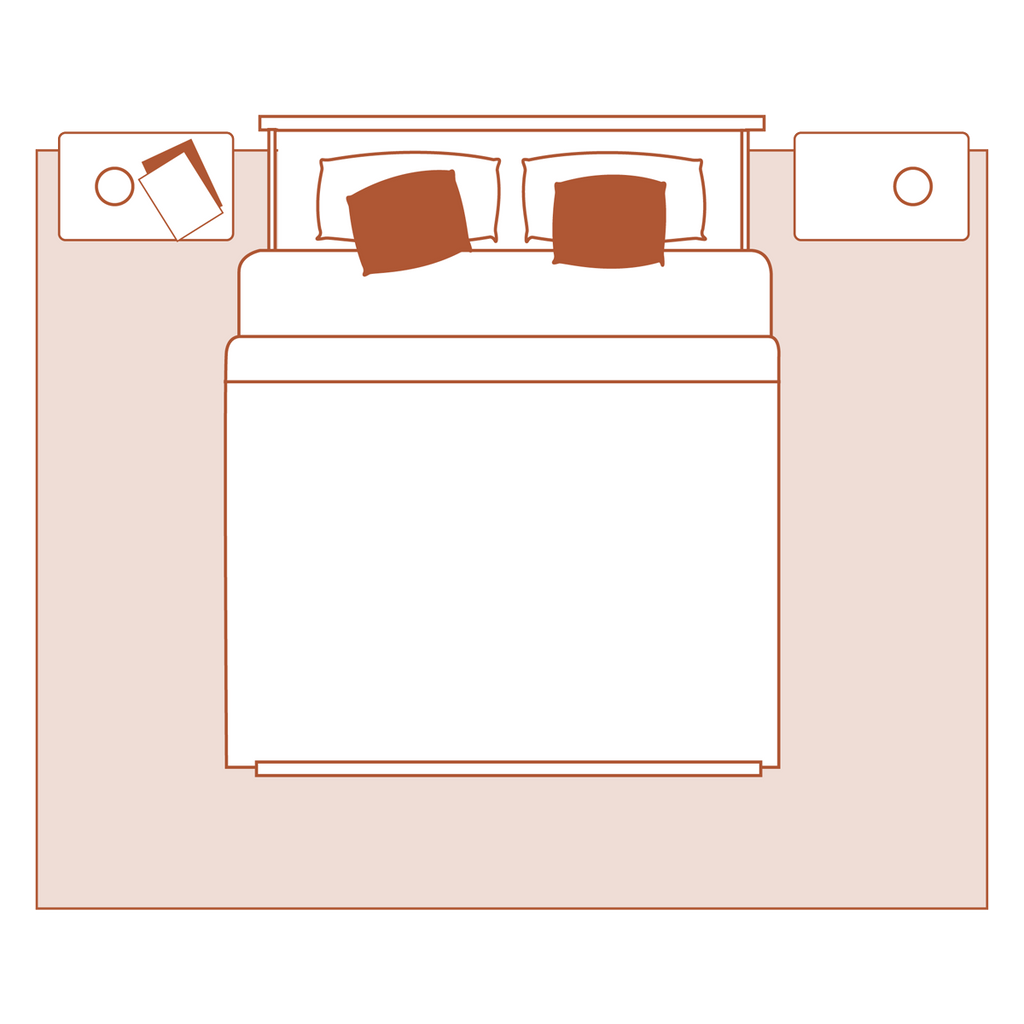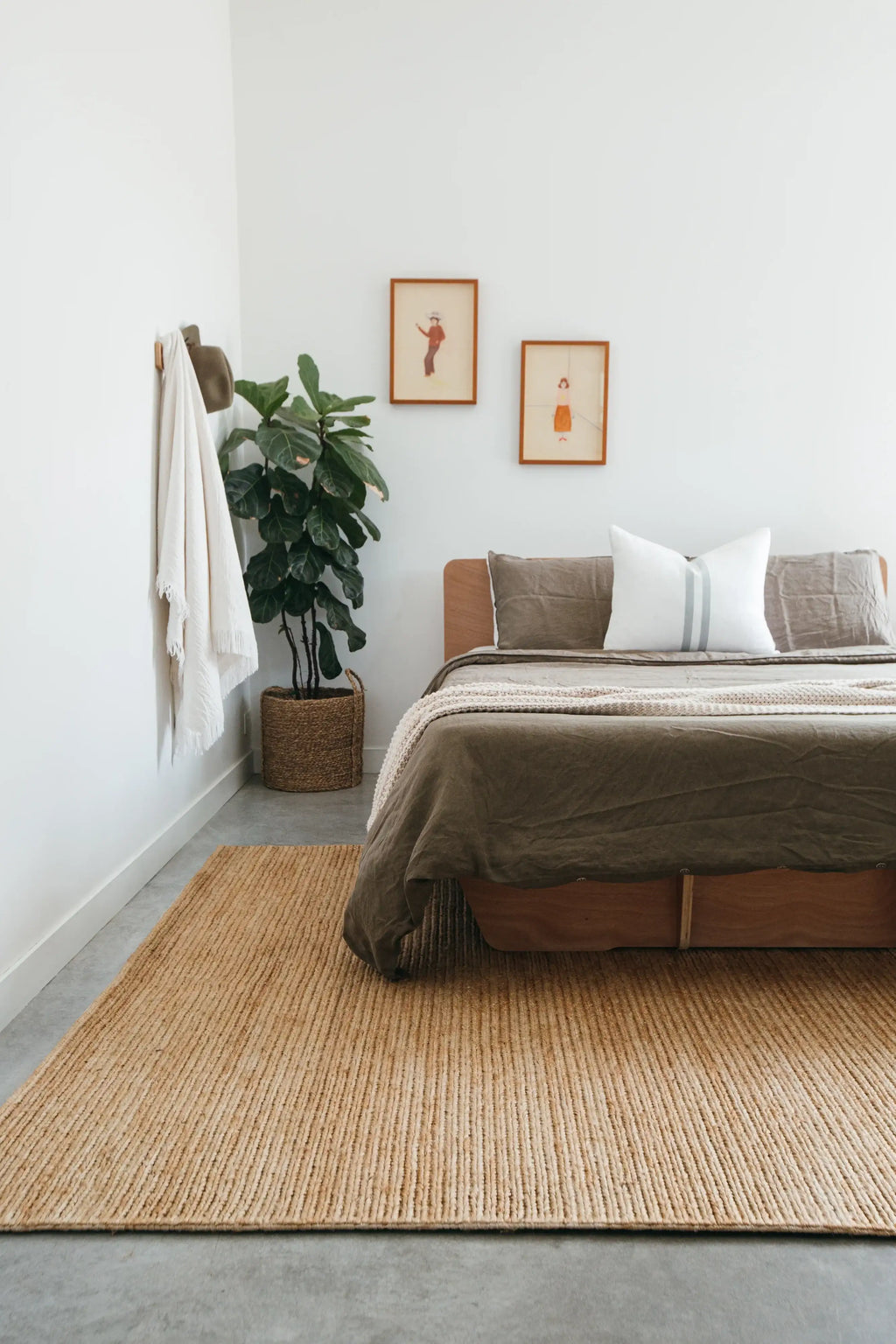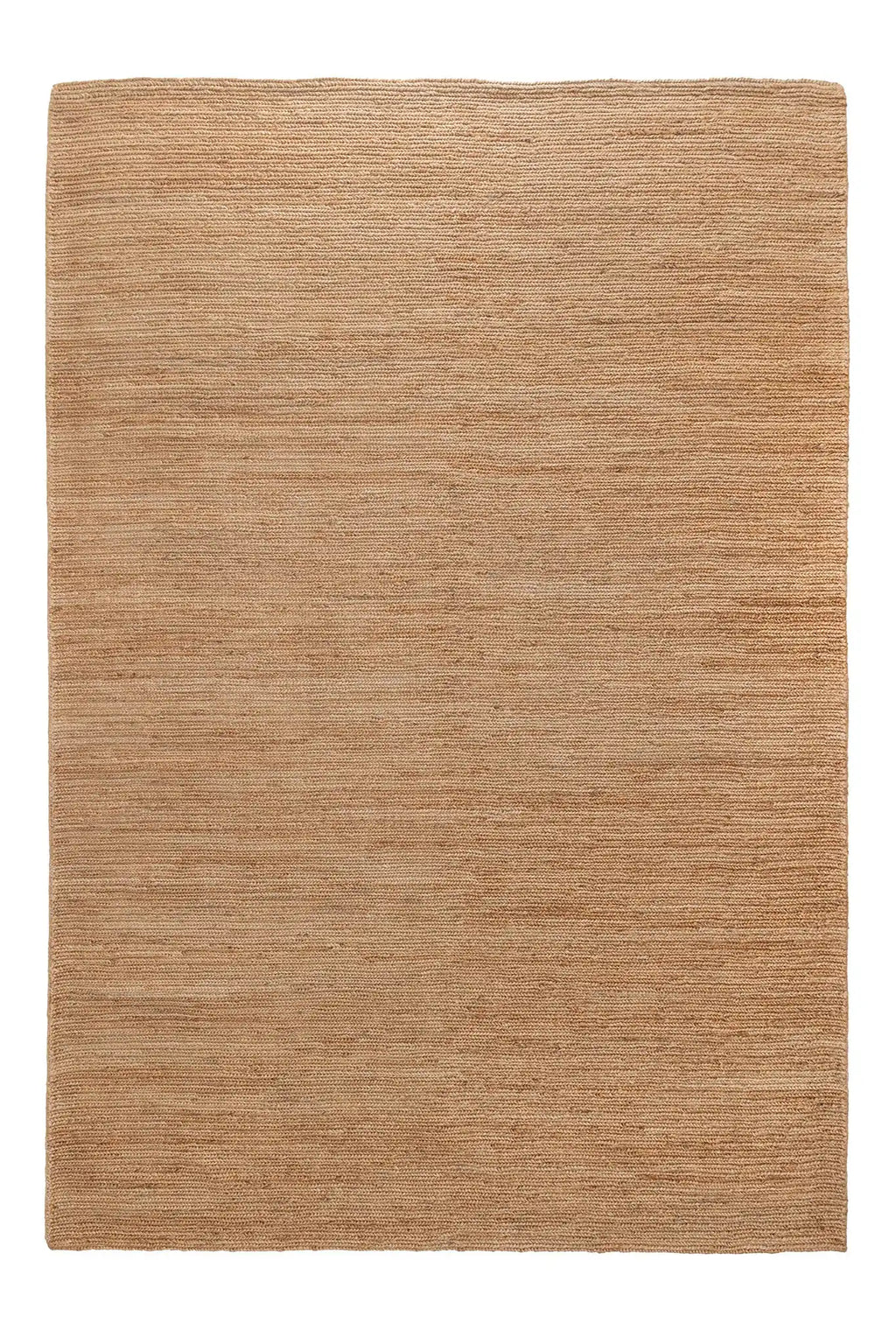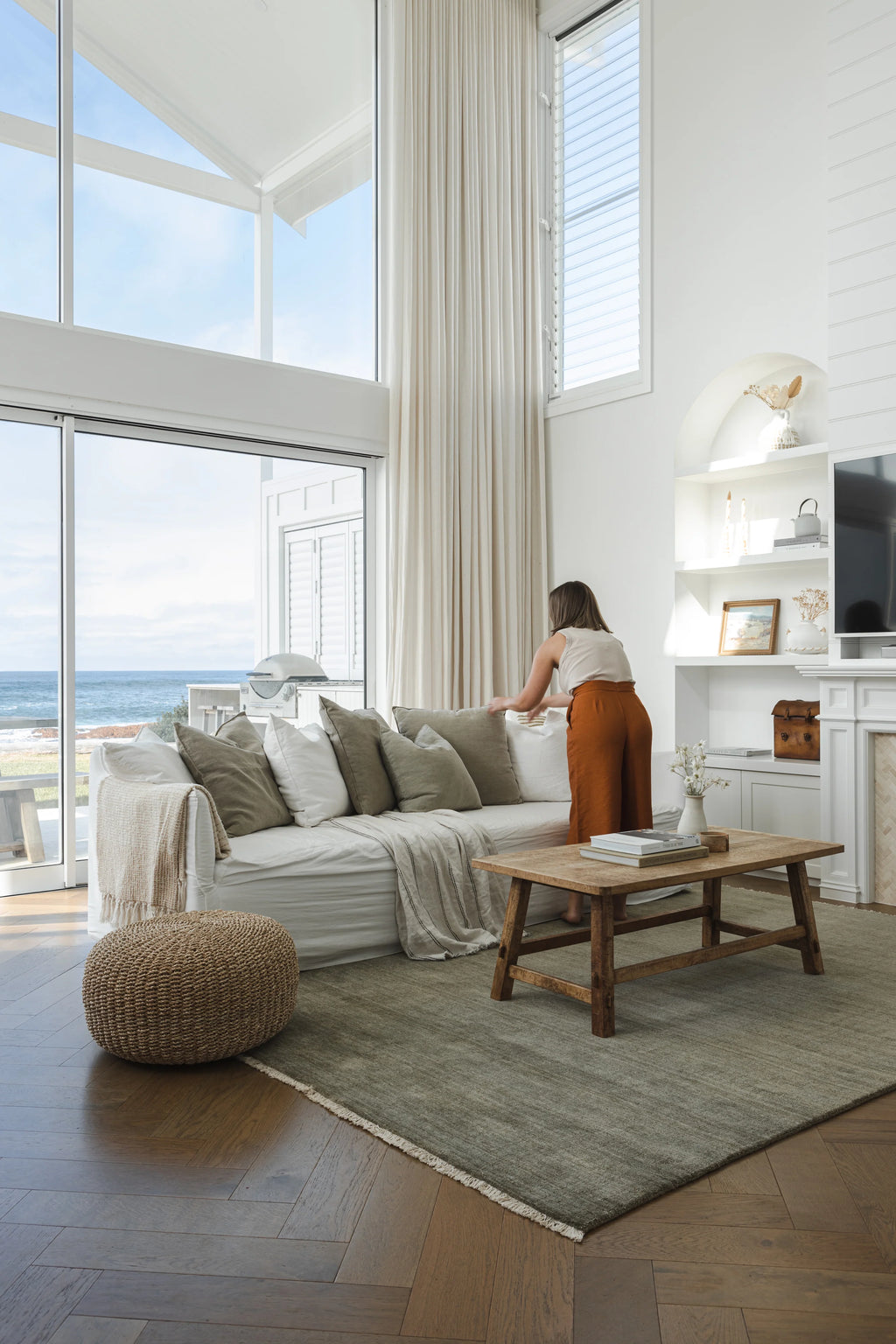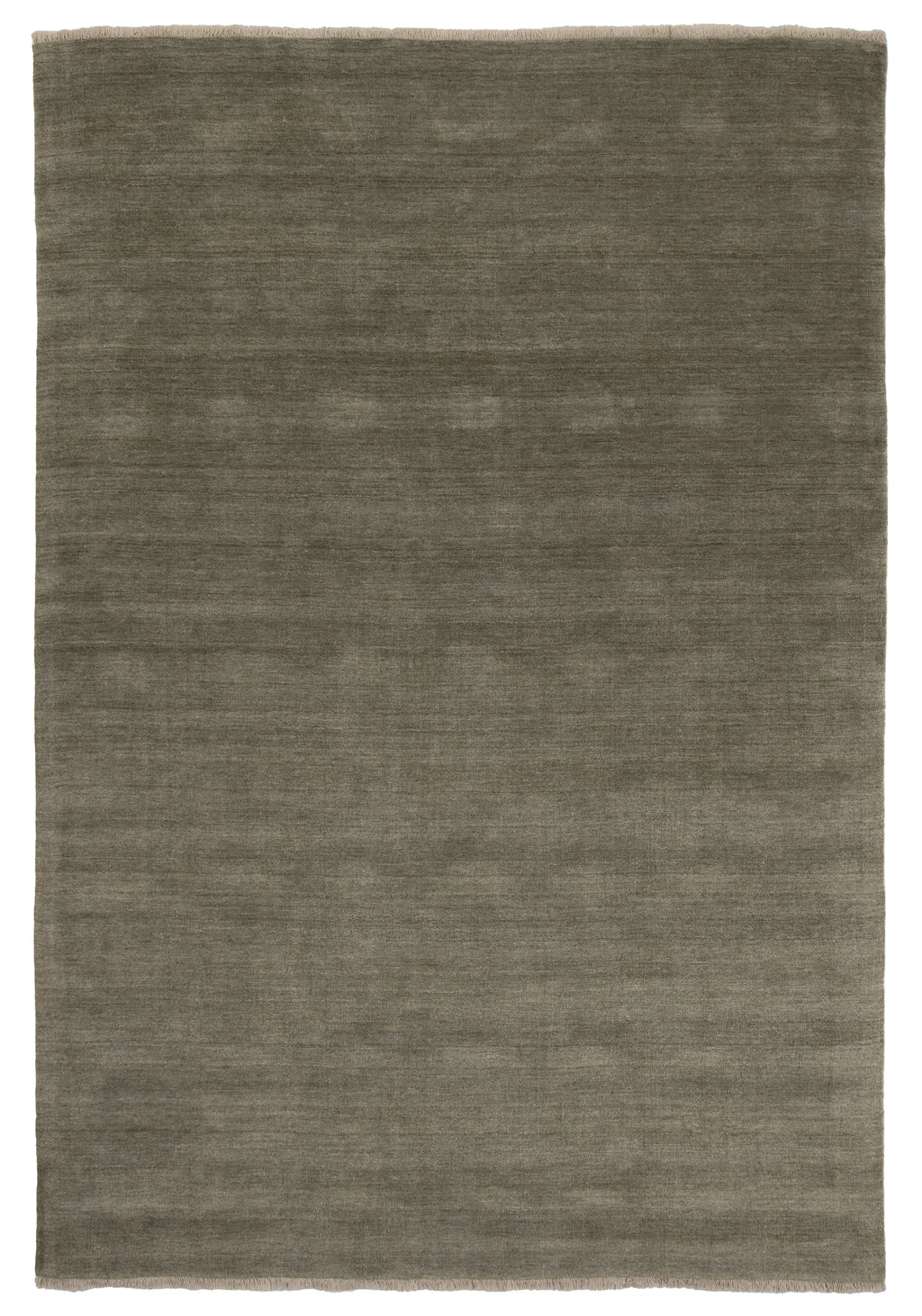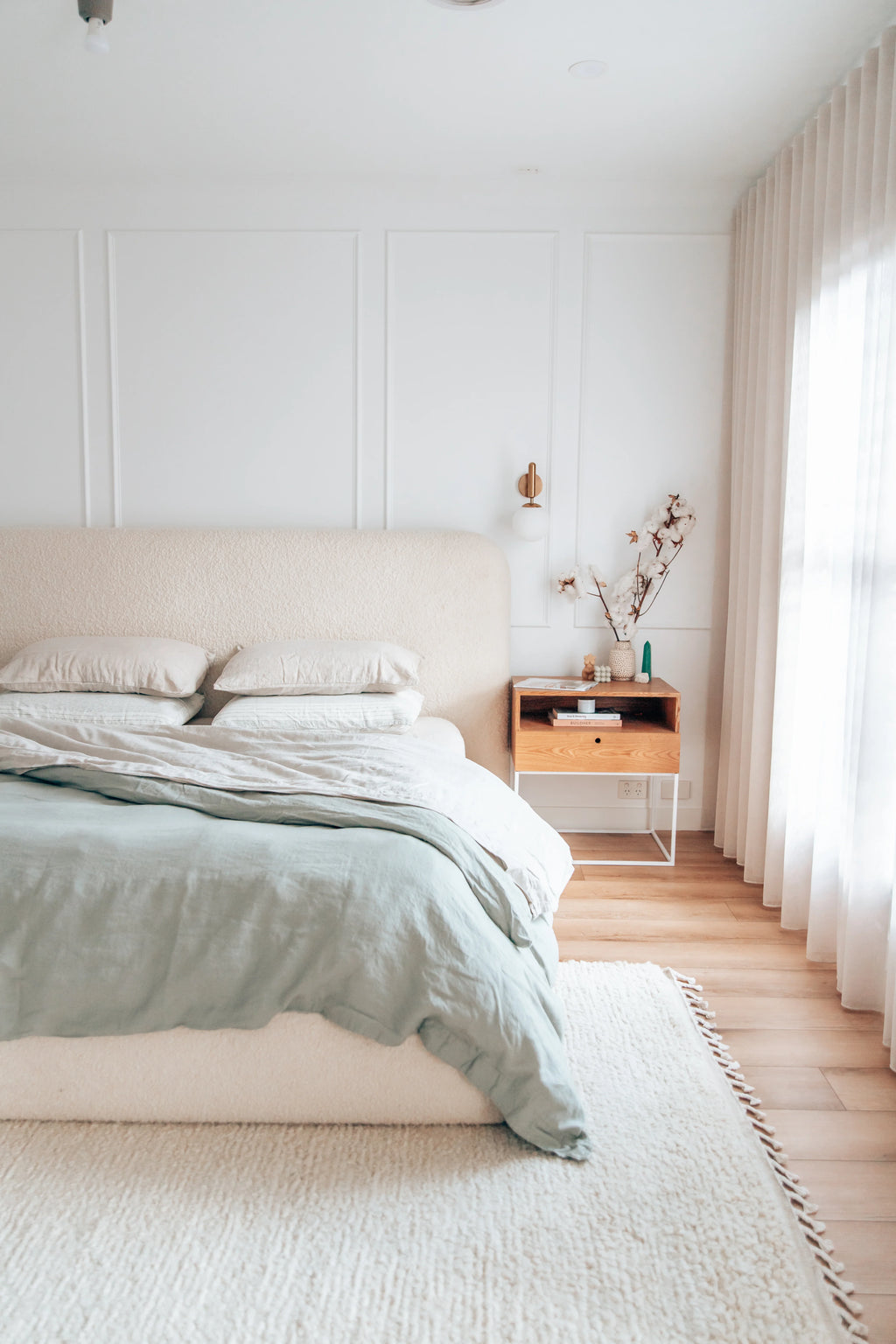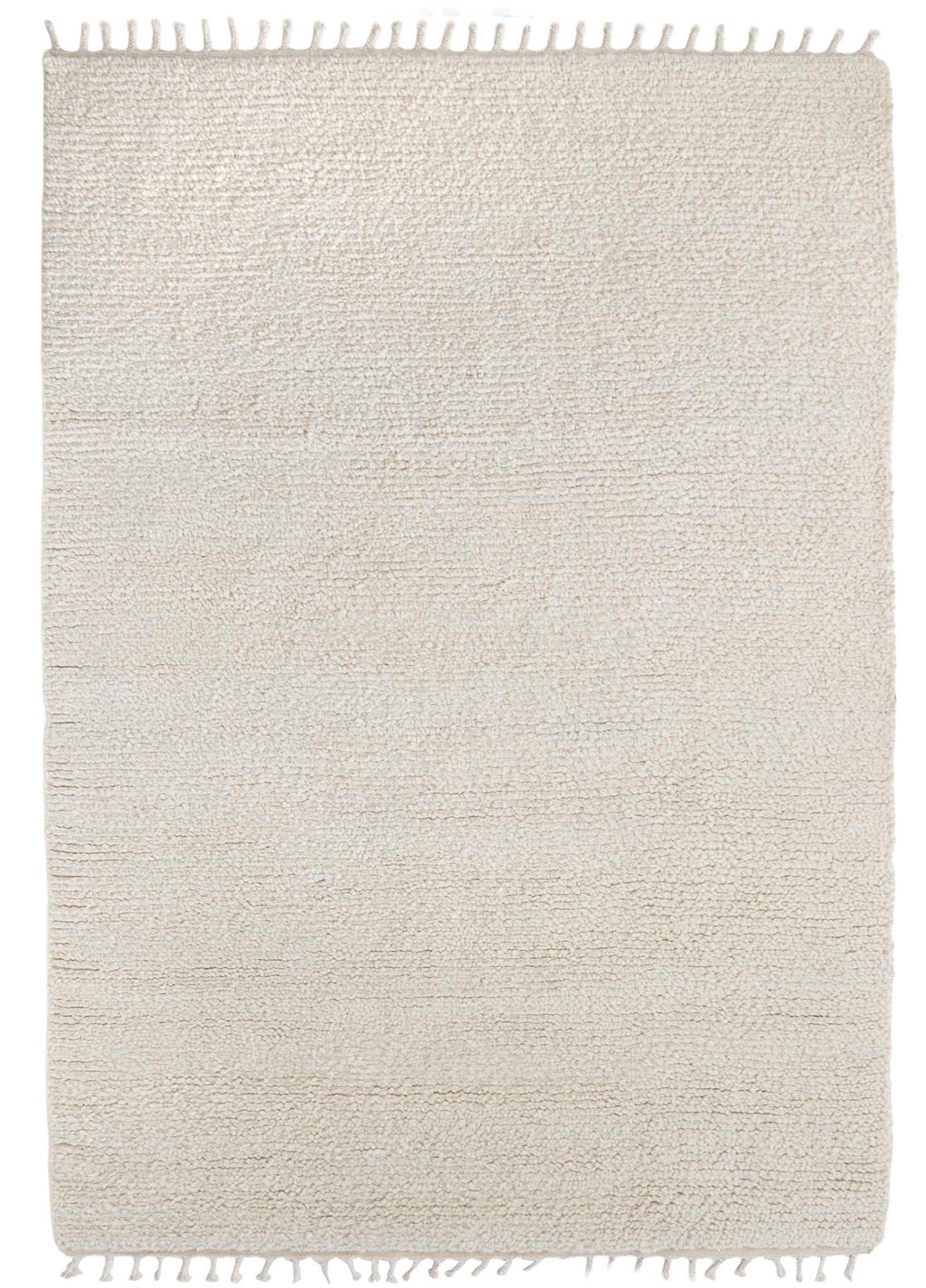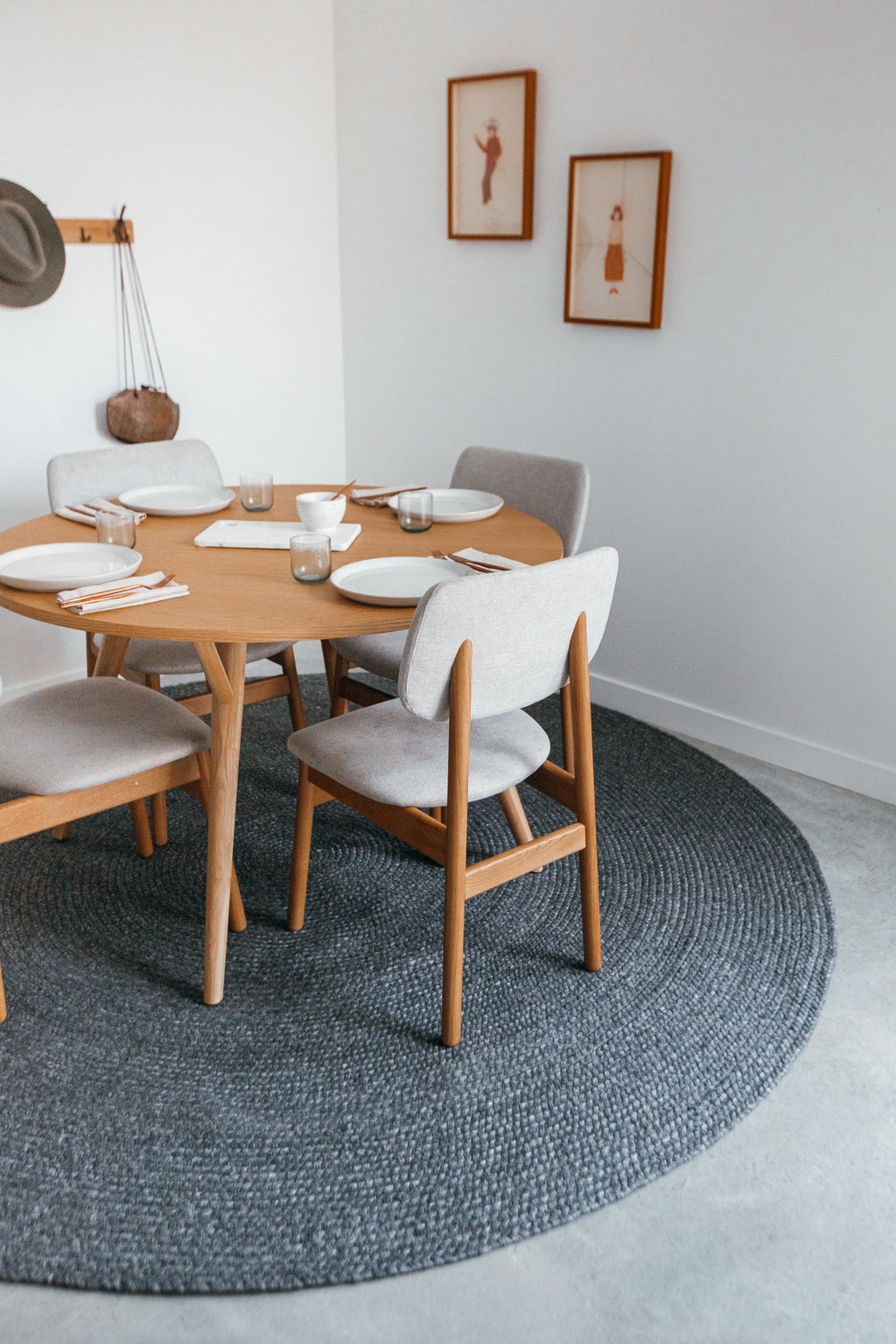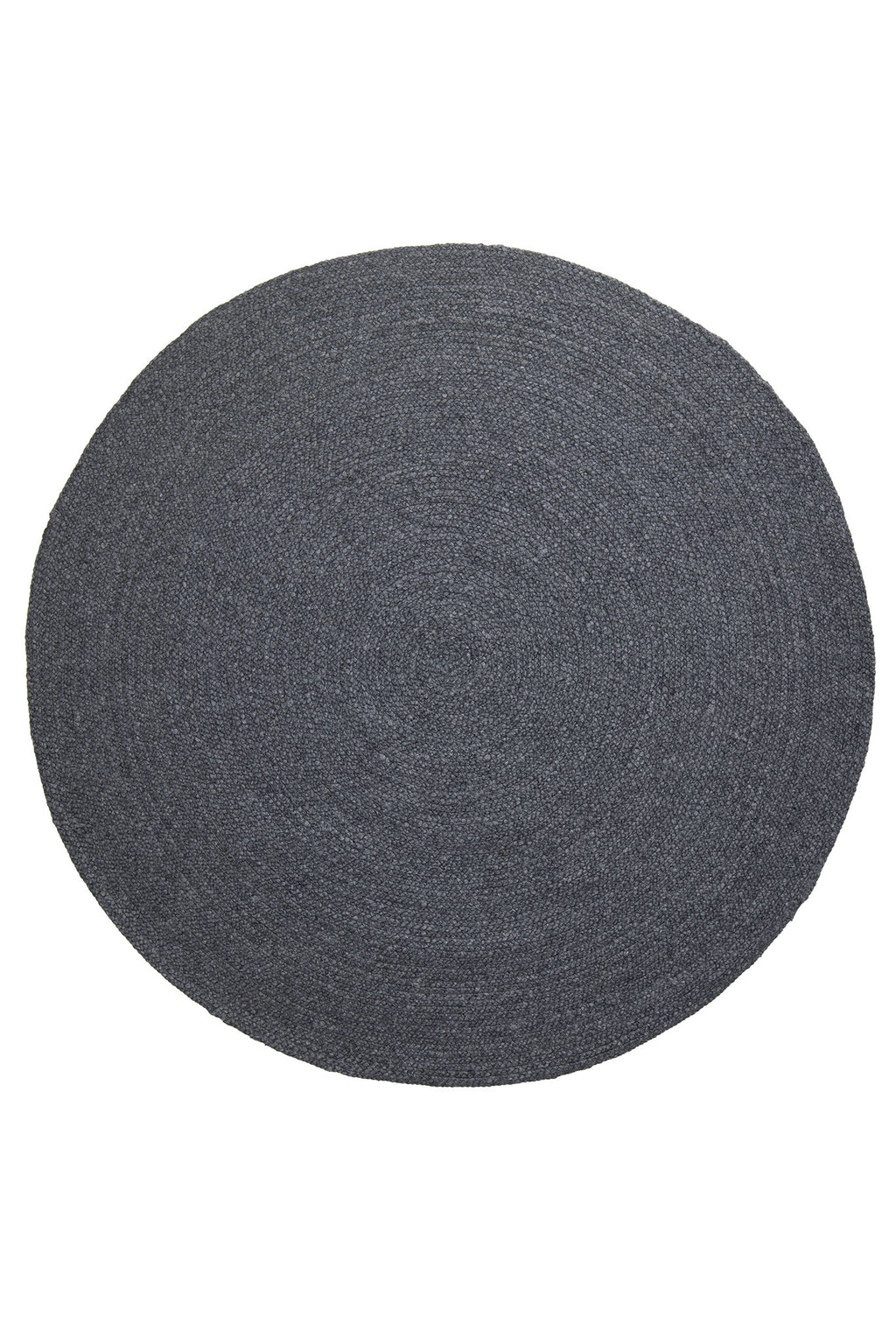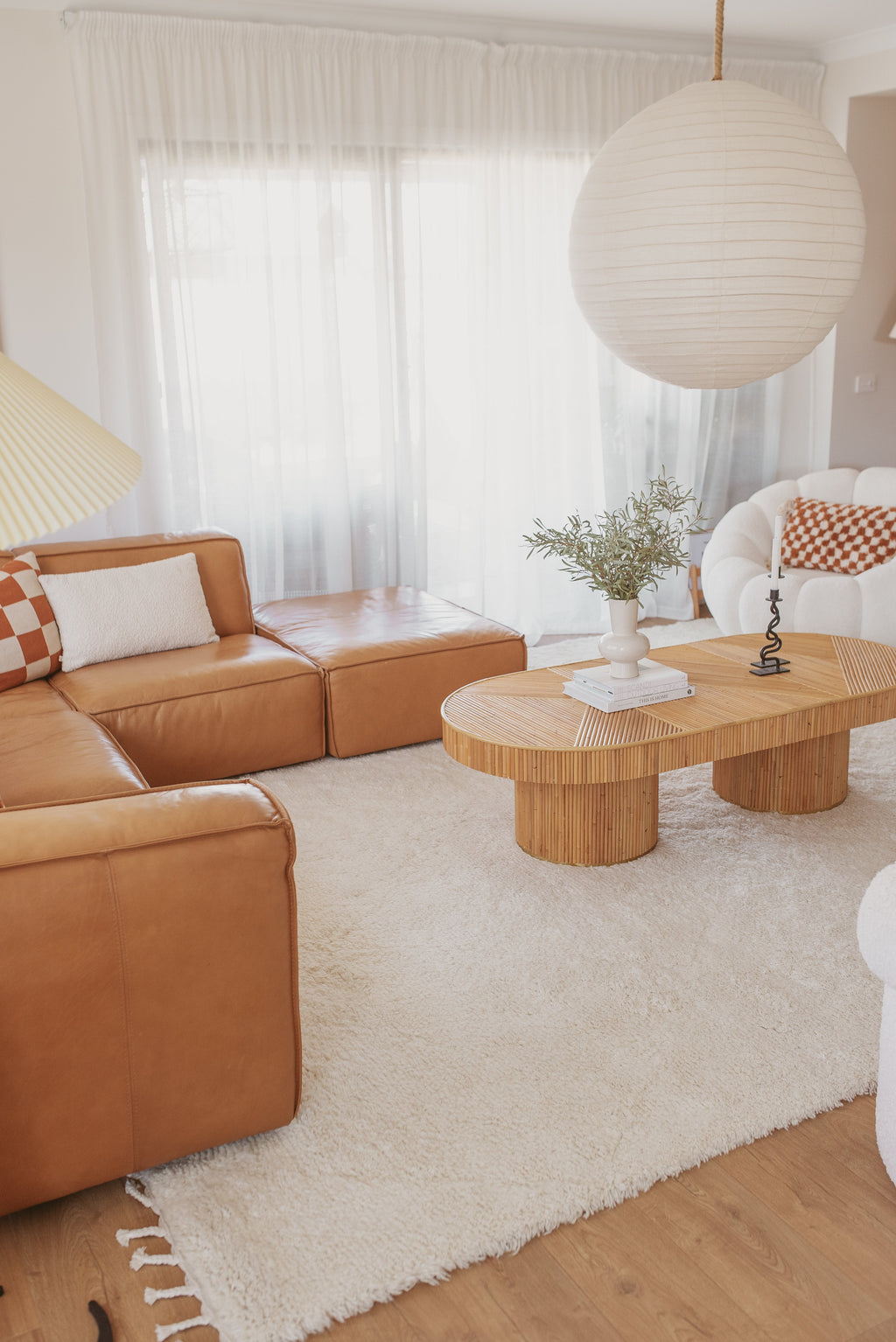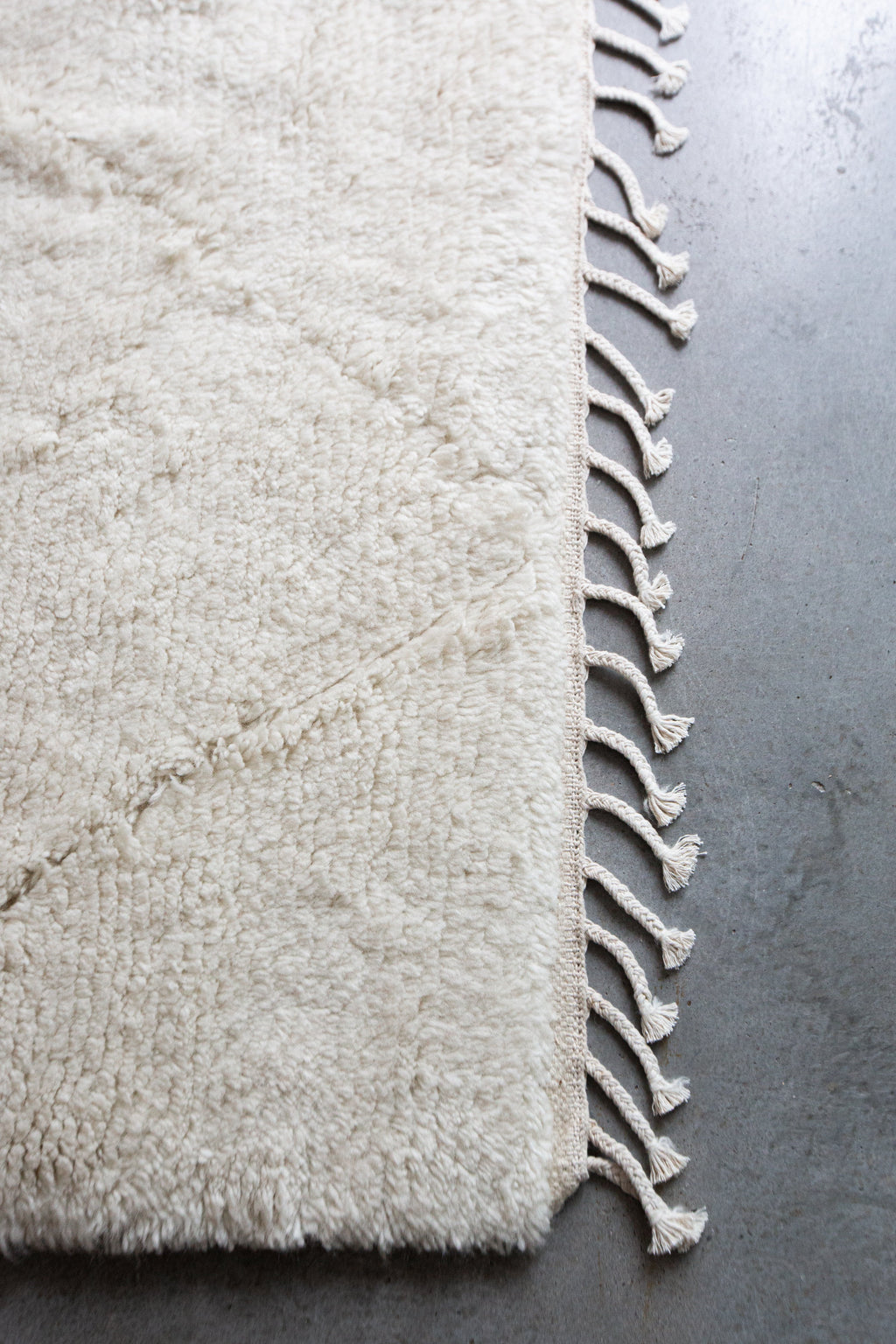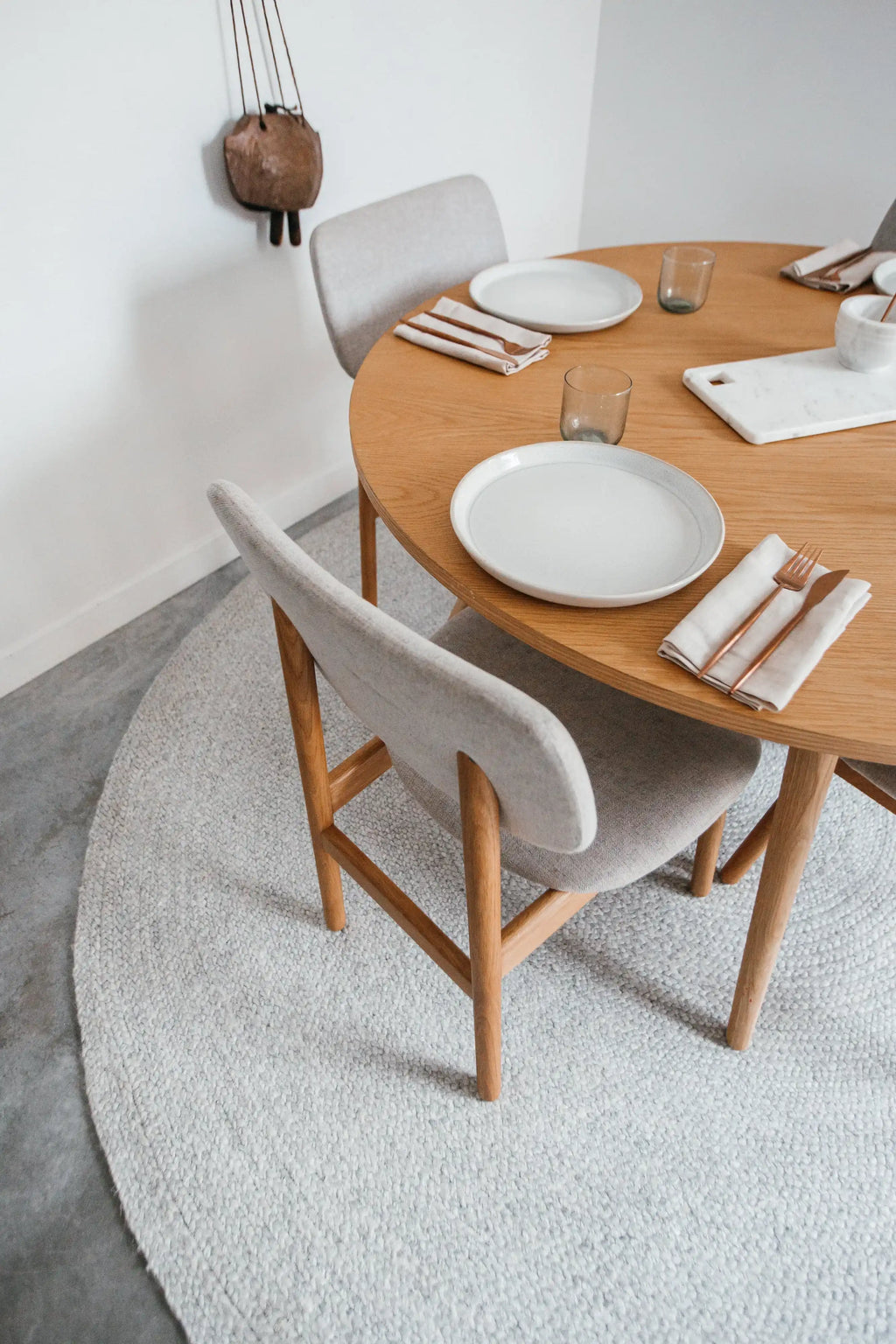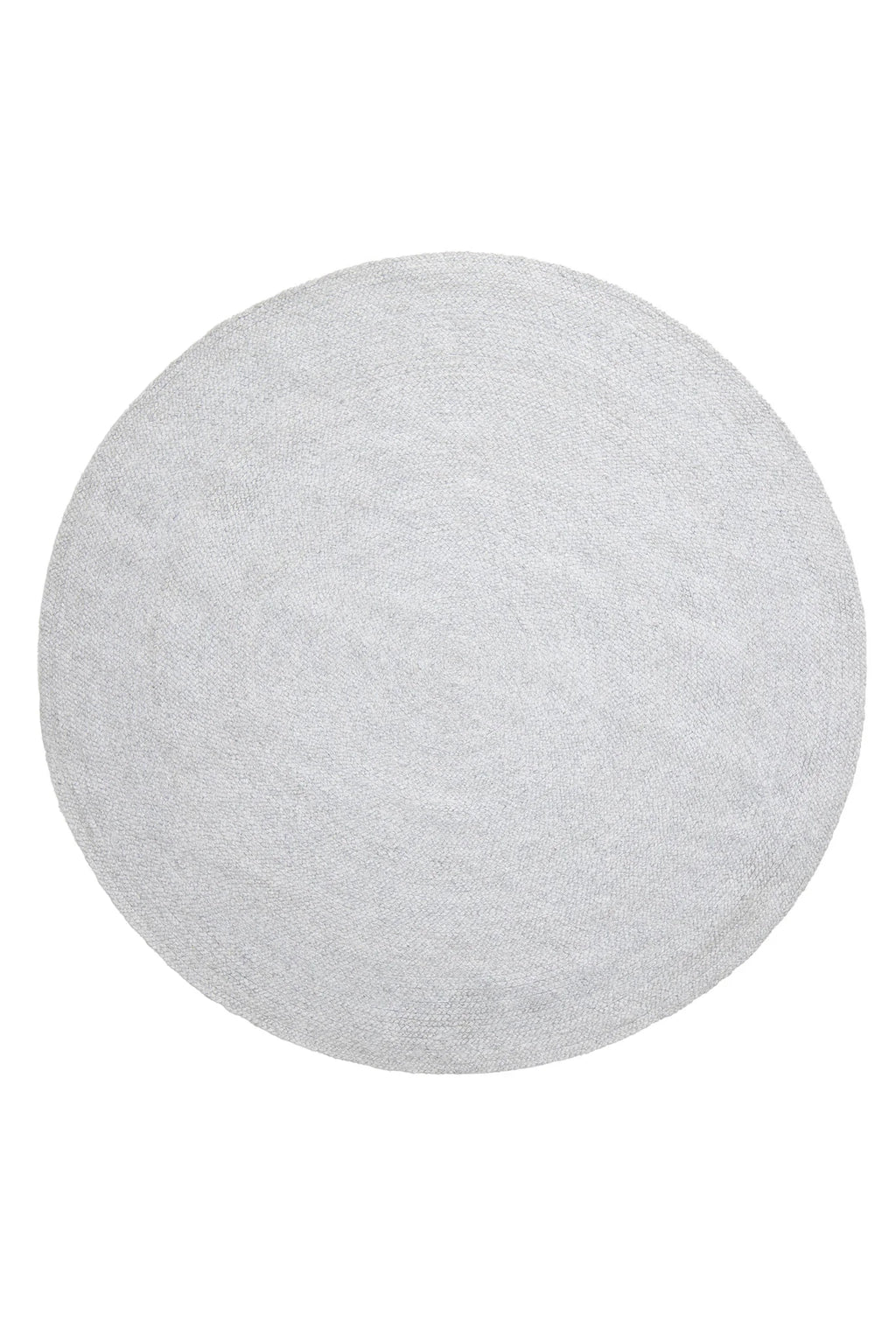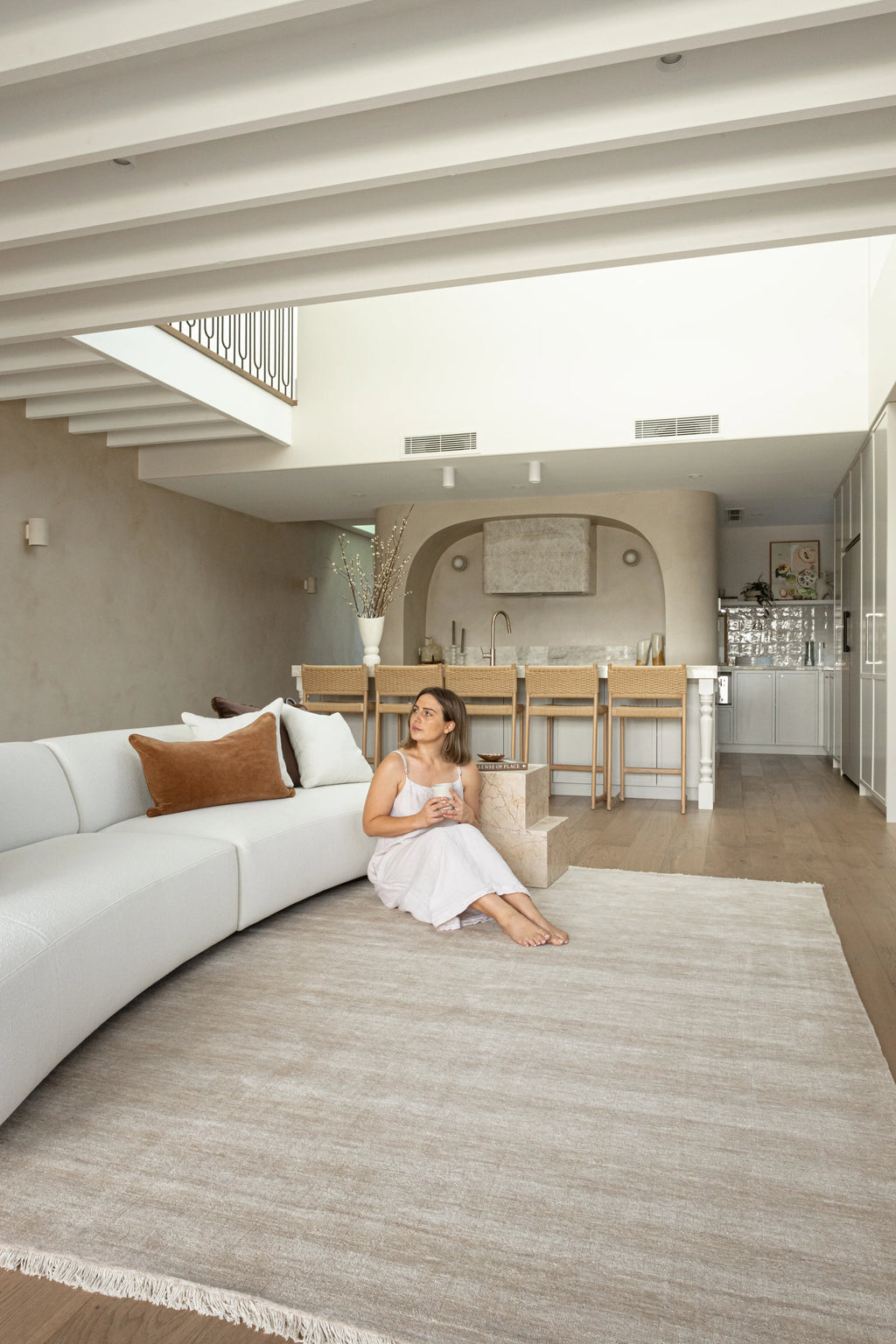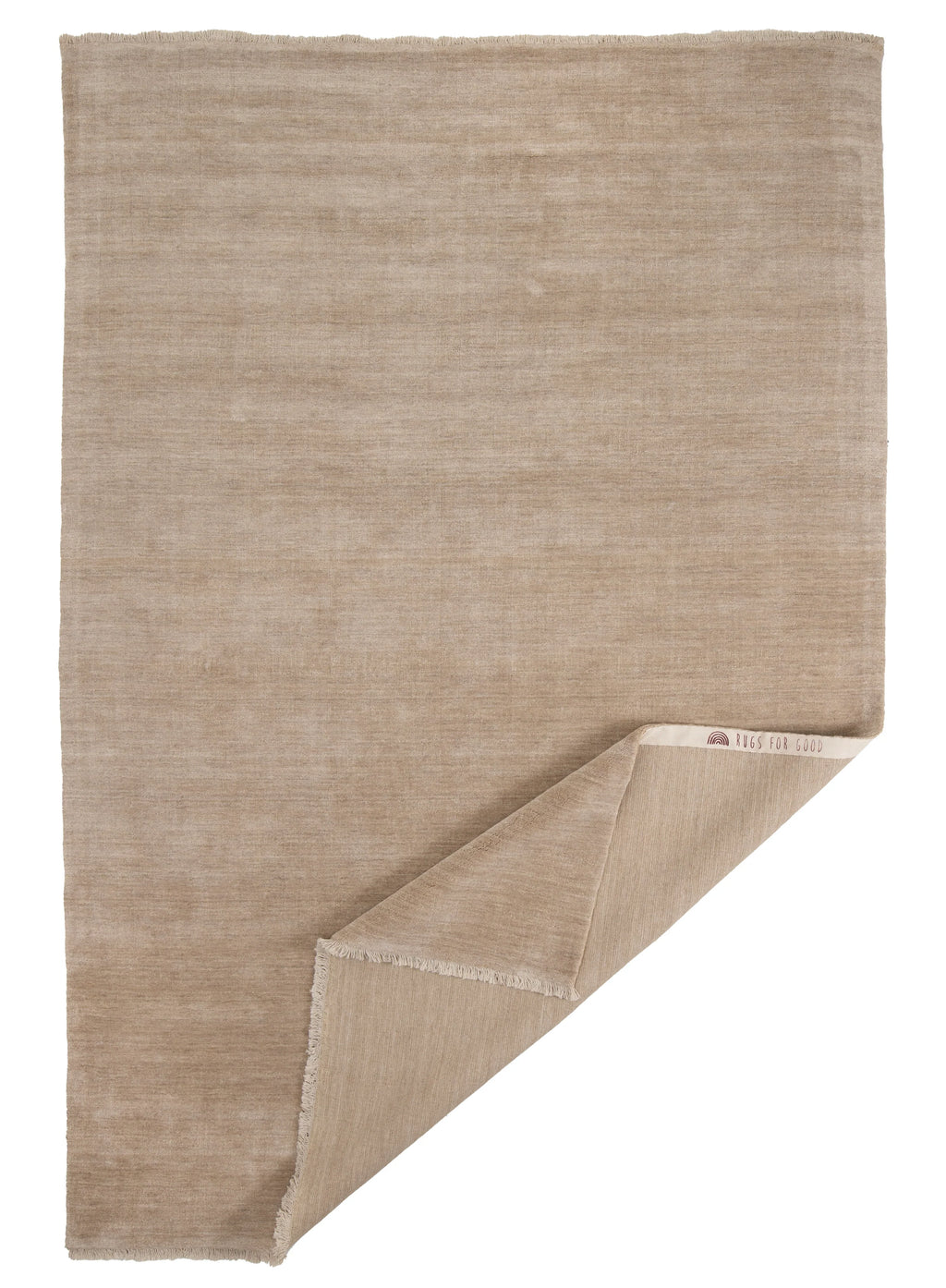
Choosing the perfect rug isn’t just about finding the right colour or pattern, it’s about how it feels, how it lives in your space, and what it's made from. It’s important to consider both the rug material and your lifestyle needs to ensure it’s the best fit for your home.
The material matters! Two of the most beloved natural fibre rugs, wool and jute, each tell a different story underfoot: one soft and luxurious, the other earthy and textured.
Whether you’re chasing comfort, durability, or something that simply fits your lifestyle, understanding the difference between a jute vs wool rug can help you choose a piece that doesn’t just look beautiful — it feels right too.
Let’s explore what sets them apart and which one might be the perfect fit for your home.
Natural Fibres, Two Ways:
Wool and Jute Compared
Both jute and wool are natural fibres, but they behave differently when woven into rugs:
Wool Rugs
-
Plush and warm underfoot, the softness of wool rugs is a key difference to jute
-
Made from sheep’s wool, a timeless rug material
-
Often found in hand-knotted or hand-loomed styles showcasing craftsmanship, durability and timeless appeal
-
Durable and naturally stain-resistant, wool can also repel dirt making in a good choice for high traffic areas
-
Great at insulating sound and temperature
Jute Rugs
-
Made from plant fibres of the jute plant
-
Known for their earthy texture and relaxed, coastal aesthetic
-
Generally flatter, firmer, and more textured underfoot
-
Ideal for layering or adding organic warmth
-
More budget-friendly but not as stain-resistant

Featuring our Richmond in Grey & Gaia Loop Weave Jute
If you're choosing between wool rugs and jute rugs, think of wool as a soft, cosy jumper ~ warm, plush, and comforting. Jute, on the other hand, is more like a handcrafted basket ~ earthy, textured, and full of natural character.
Best Rugs for Every Room
Choosing between a wool rug or a jute rug often comes down to the room you’re styling and the specific needs for a rug for your space. Selecting the right rug material for your space depends on factors like material, style, and the function of the room, ensuring it complements your décor and fits your lifestyle.
Both options can enhance living spaces and complement a variety of interior design styles, making them a versatile choice for your home. Here’s how the two materials stack up in different spaces, including dining rooms, where wool rugs are ideal due to their durability and ability to handle high traffic:
Living Room
Both wool and jute rugs add warmth and texture to living spaces, creating a cosy and inviting atmosphere.
Hand knotted wool rugs add plushness and comfort, perfect for lounging and layering. Wool’s durability also makes it suitable for high-traffic family zones.
Jute rugs offer a laid-back, textural feel, but may be better suited to lower-traffic areas unless layered or used with care.
Tip: Handmade wool rugs in neutral tones for an elevated, timeless base.
Featuring our Sedona in Sepia & Dharma Braided Jute
Bedroom
Wool wins on warmth and softness and is ideal for under foot first thing in the morning.
A neutral wool rug grounds the room and feels luxurious.
Jute can still work here, especially in warmer climates or under beds where softness is less of a priority.
Featuring our Bangalow in Paperbark & Marigold Wavy Jute
Kitchen & Dining
Jute rugs shine here. They’re firm, flat-woven, and easy to sweep clean and perfect for a high-traffic area like a kitchen. Just be careful with spills -jute is more absorbent and trickier to spot-clean.
Wool can work too, especially low-pile or tightly woven styles, but always spot-treat quickly to avoid staining.a
Featuring our Lennox Jute Rug
Featuring our Mendocino in Olive
Hallways
A jute runner is a great choice for hallways - it adds natural charm and is durable enough to handle daily foot traffic. If you're after extra softness or sound absorption, consider layering with a rug underlay for added comfort underfoot.
Our Dharma Braided Jute Runner is beautiful and practical. Hand-braided by skilled artisans, it brings warmth, texture, and a natural feel to narrow spaces like hallways, entryways, or beside the bed. Made from durable jute, it’s perfect for high-traffic areas and adds an earthy, grounded look to any home.
Featuring our Avoca Jute Runner & Dharana Jute Round Rug
Bathroom
While wool and jute rugs aren’t traditionally recommended for high-moisture areas like bathrooms, we know they can still look beautiful in the right setting - and we've even styled them in bathrooms ourselves.
If you're considering using one in a bathroom, we recommend placing it in a well-ventilated, low-moisture area and pairing it with a quality rug underlay to help prevent slipping.
Regular airing out and proper care will also help preserve the rug’s natural fibres and keep it looking great over time.
Featuring our Dharana Braided Doormat & Dharana Braided Runner
Note: Both wool and jute are some of the most durable rug materials for the home so either are a great choice for most rooms.
Styling Wool and Jute Rugs in Your Home
Wool and jute each bring their own styling language:
-
Jute rugs add earthy texture and rustic warmth, pairing beautifully with timber, rattan, and natural palettes. Try a round jute rug under a dining table or in an entryway.
-
Wool rugs are more versatile in design—think bold patterns, calming neutrals, and intricate textures. They’re perfect for layering and defining space.

Featuring our Dharana Jute Round Rug
Are Jute and Wool Rugs Allergy- and Pet-Friendly?
Both wool and jute are natural and non-toxic, making them great options for allergy-sensitive homes and much better than synthetic rugs. However, there are a few differences ~
-
Wool is naturally hypoallergenic, resistant to dust mites, and temperature-regulating - ideal for allergy sufferers.
-
Jute is breathable and natural rug material, but its textured surface can trap more debris. Frequent vacuuming helps.

For pet-owners
-
Jute rugs are fine for pets, but their looser weave may wear faster with clawing.
-
Wool rugs are more resilient to both claws and pet-related mess.
Cleaning and Maintaining Your Wool or Jute Rug
One of the biggest factors when choosing a rug is maintenance. When cleaning wool or jute rugs, avoid using harsh chemicals or cleaners to preserve their natural qualities.
Cleaning a Wool Rug
-
Vacuum regularly
-
Spot-clean spills quickly
-
Professional cleaning once a year for longevity
Cleaning a Jute Rug
-
Shake or vacuum regularly (use low suction)
-
Avoid excess water - blot spills immediately
-
For tough stains, dry cleaning is recommended
Eco-Friendly Rug Options
At Rugs for Good, we love both wool and jute for their sustainability.
-
Wool is renewable, biodegradable, and long-lasting when cared for properly.
-
Jute is one of the most eco-friendly fibres available ~ fast-growing and requiring minimal pesticides or water.
Natural rugs like wool and jute differ from those made with synthetic fibres such as nylon or polypropylene. While synthetic rugs offer durability and stain resistance they are less environmentally friendly and require more maintenance compared to natural materials.
Whichever you choose, both are better for the planet than synthetic options.
Cost Considerations
Generally speaking, wool rugs come at a higher price point due to:
-
The cost of wool fibres
-
Labour-intensive handcrafting
-
Durability and longevity
Jute rugs, on the other hand, are more affordable and still offer plenty of style and substance - especially if you’re looking to refresh a space on a budget.
Featuring our Sapna Hand Knotted Rug & Marigold Wavy Jute Rug
Wool or Jute? Which is The Right Rug for You
Both wool and jute rugs are a beautiful, sustainable and natural rug material for your home.
The best choice comes down to your lifestyle, the feel you’re after, and where the rug will live.
-
For softness and warmth - Choose wool.
-
For texture and a relaxed aesthetic - Choose jute.
Whichever material is right for you - you’ll be investing in a rug that’s natural, thoughtful, and made to last.
Shop the Edit ~





